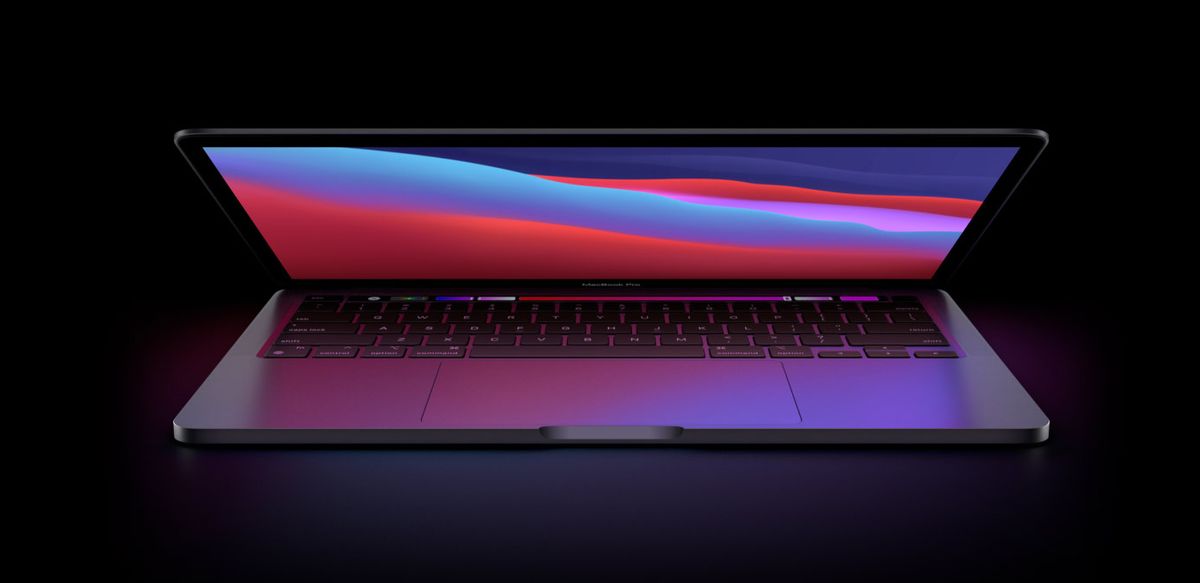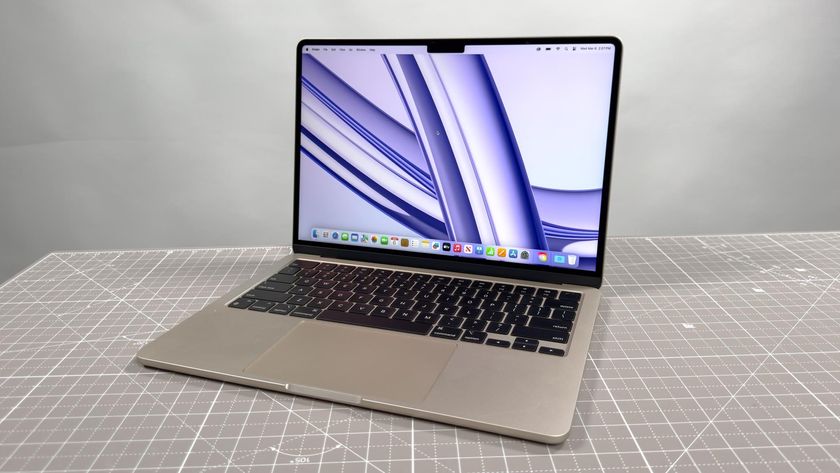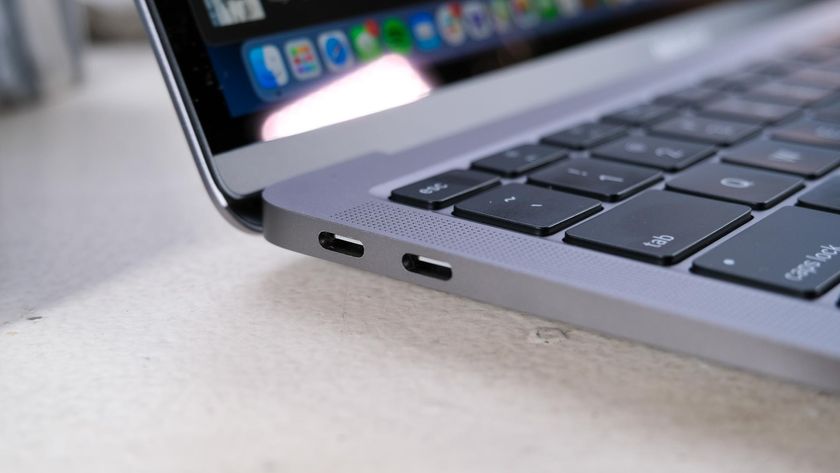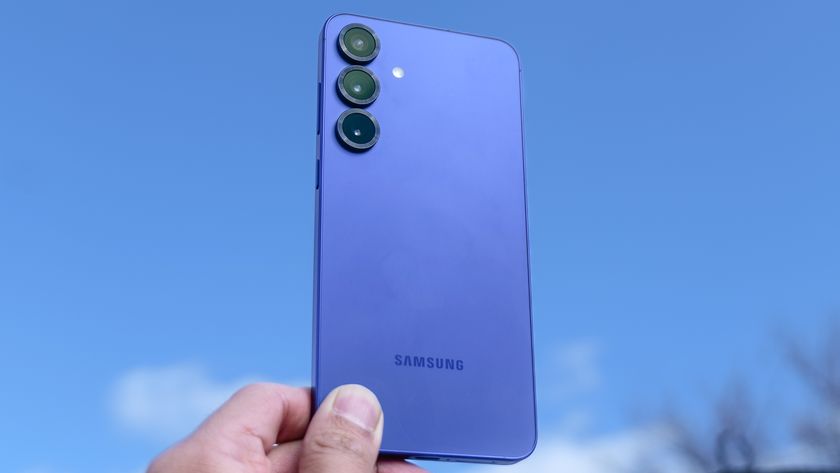MacBook M1 benchmarks are in — and they destroy Intel
The new MacBook Pro and Air benchmarks are impressive

The new MacBook Pro and Air are a huge leap forward in performance, and we've got the numbers to prove it. After I finished my MacBook Air with M1 (2020) review, it immediately became clear why Apple has moved on from Intel.
Yes, the new Apple M1 chip is the game-changer that Apple's claimed it would be. And to prove it, we've put the M1 MacBook Air and Pro up against two of the best laptops there are: the 11th Gen Tiger Lake-based Dell XPS 13 and the Asus ZenBook 13. Those laptops have only one win when compared to the M1 MacBooks.
- The best laptops: where the new MacBook Air ranks
- MacBook Air vs Pro: How they stack up
Oh, and we've also got some M1 MacBook Air and MacBook Pro battery life results that will definitely wow you, if performance isn't your main priority.
MacBook M1 vs Intel: Performance benchmarks
Simply put, the M1 chip in the MacBook Air crushes the competition — and the past as well. Just look at the below Geekbench 5 scores, where the new MacBook Air's score of 5,962 crushes the 5,084 from the Asus ZenBook 13 and beats the 5,319 from the Dell XPS 13. Both of those PCs run on Intel's 11th Gen Tiger Lake Core i7 processors, with 16GB of RAM each (the same amount of memory in the M1-equipped MacBooks).
If you were expecting higher numbers from the M1 MacBooks, I'll note that we're using the Geekbench 5.1 scores, which are comparable to the Geekbench 5.2 scores we got from the aforementioned PCs. The Geekbench 5.3 scores for the MacBooks are much higher, but that test isn't comparable to older versions, as Geekbench itself says. Oh, and Geekbench 5.1 isn't optimized for Apple Silicon, so these scores may be a bit low for Apple.
| Header Cell - Column 0 | Geekbench 5 | Handbrake video transcoding | PugetBench Photoshop |
|---|---|---|---|
| M1 MacBook Air | 5,962 | 9:15 | 653 |
| M1 MacBook Pro | 5,925 | 7:44 | 649 |
| Dell XPS 13 (Tiger Lake) | 5,319 | 18:22 | 588 |
| Asus ZenBook 13 (Tiger Lake) | 5,084 | 17:51 | 743 |
| Intel MacBook Air 2020 | 2,738 | 27:10 | n/a |
| Intel MacBook Pro (13-inch, 2020) | 4,399 | 12:43 | 569 |
The M1 MacBook Air and Pro win again on our Handbrake video transcoding test, converting a 4K film to 1080p at 9:15 and 7:44 respectively. The Air's time is almost a third of the 27:10 the previous Intel MacBook Air needed, while both M1 scores are around half (or less) of the times posted by the XPS 13 and the ZenBook 13.
Oh, and on the PugetBench Photoshop test — which performs 21 different Photoshop tasks, three times per run — the M1 Air (653) and Pro (649) beat the XPS 13 (588). Again, though, this test isn't optimized for Apple Silicon — it's an Intel-based test running through Rosetta 2, so Apple's scores may improve when it's optimized.
Sign up to get the BEST of Tom's Guide direct to your inbox.
Get instant access to breaking news, the hottest reviews, great deals and helpful tips.
MacBook M1 vs Intel: Gaming benchmarks
The MacBook Air has never been known as a gaming machine, but the M1 chip may change its reputation there as well. While the below Civilization VI scores are on slightly lower resolutions (1440 x 900 on Macs vs 1920 x 1080 on PCs), the M1 MacBook Air (37 fps) and MacBook Pro (38 fps) ran circles around the 16 fps rate from the ZenBook 13, and handily beat the XPS 13 as well.
| Header Cell - Column 0 | Civilization VI: Gathering Storm | Resolution |
|---|---|---|
| M1 MacBook Air | 37 | 1440 x 900 |
| M1 MacBook Pro | 38 | 1440 x 900 |
| Dell XPS 13 | 21 | 1920 x 1080 |
| Asus ZenBook 13 | 16 | 1920 x 1080 |
| Intel MacBook Air (2020) | 7 | 1440 x 900 |
| Intel MacBook Pro (13-inch, 2020) | 18 | 1440 x 900 |
The poor old Intel MacBook Air? It only ran Civ VI at 7 fps, an unplayable rate if ever there was.
MacBook M1 vs Intel: Battery life results
And if endurance is your key metric, well, Apple did it again. The new MacBook Air (14:41) lasted hours longer than the Dell XPS 13 (11:07), and it also beat the ZenBook 13 (13:47) by almost a full hour. Need more endurance? The M1 MacBook Pro (16:32) redefines all-day battery life.
| Header Cell - Column 0 | Battery life | Header Cell - Column 2 |
|---|---|---|
| M1 MacBook Air | 14:41 | Row 0 - Cell 2 |
| M1 MacBook Pro | 16:32 | Row 1 - Cell 2 |
| Asus ZenBook 13 | 13:47 | Row 2 - Cell 2 |
| Dell XPS 13 | 11:07 | Row 3 - Cell 2 |
| Intel MacBook Air 2020 | 9:31 | Row 4 - Cell 2 |
| Intel MacBook Pro (13-inch, 2020) | 10:21 | Row 5 - Cell 2 |
In the end, it's shocking to see what the Apple M1 chip allows. Apple's refined its strength in the ARM-based processor field in the iPhone for so long, and its got amazing results to reap by bringing that tech to the laptop world.
One wonders how the 16-inch MacBook Pro (and the higher-end 13-inch MacBook Pro) will be revolutionized by Apple Silicon in the years to come.

Henry is a managing editor at Tom’s Guide covering streaming media, laptops and all things Apple, reviewing devices and services for the past seven years. Prior to joining Tom's Guide, he reviewed software and hardware for TechRadar Pro, and interviewed artists for Patek Philippe International Magazine. He's also covered the wild world of professional wrestling for Cageside Seats, interviewing athletes and other industry veterans.
-
varase Most people are looking at these first Apple Silicon Macs wrong - these aren't Apple's powerhouse machines: they're simply the annual spec bump of the low end Apple computers with DCI-P3 displays, Wifi 6, and new the Apple Silicon M1 SoC.Reply
They have the same limitations as the machines they replace - 16 GB RAM and two Thunderbolt ports.
These are the machines you give to a teacher or a lawyer or an accountant - folks who need a decently performing machine who don't want to lug around a huge powerhouse machine (or pay for one for that matter). They're still marketed at the same market segment, though they now have a vastly expanded compute power envelope.
The real powerhouses will probably come next year with the M1x (or whatever). Apple has yet to decide on an external memory interconnect and multichannel PCIe scheme, if they decide to move in that direction.
Other CPU vendors and OEM computer makers take notice - your businesses are now on limited life support. These new Apple Silicon models can compete up through the mid-high tier of computer purchases, and if as I expect Apple sells a ton of these many will be to your prime (most profitable) customers.
In fact, I suspect that Apple - once they recover their R&D costs - will be pushing the prices of these machines lower while still maintaining their margins - while competing computer makers will still have to pay Intel, AMD, Qualcomm, and nVidea for their expensive xPUs, whereas Apple's cost goes down the more they manufacture. Competing computer makers may soon be demanding lower xPU prices from the above xPU manufacturers so they can more readily compete against these models.
I believe the biggest costs for a chip fab are startup costs - no matter what xPU vendors would like you to believe. Design and fab startup are expensive - but once you start getting decent yields, the additional costs are silicon wafers and QA. The more of these units Apple can move, the lower the per unit cost and the better the profits. -
olderi Looking at tests from Youtube etc, 8GB RAM or performance in general does not seem to be an issue with these M1 computers. They still beat MacBook 16" and others, so less memory do more in M1 than Intel.Reply
Apple will not lower their prices though, not at least until they get some reasonable competition and that will not happen in near future. Maybe not in years. Even if someone can make computers and OS to compete with Apple, they do not have the App and service ecosystem that Apple has. This is actually kind of bad, because there will be no competition in a long time... -
jackdomino Sorry, but you clearly got this part very wrong:Reply
The Geekbench 5.3 scores for the MacBooks are much higher, but that test isn't comparable to older versions, as Geekbench itself says. Oh, and Geekbench 5.1 isn't optimized for Apple Silicon, so these scores may be a bit low for Apple.
Right after you typed the "Oh, and.." you should have realized something doesn't add up there. You're comparing emulated Geekbench scores for the mac to native scores for the XPS. That is clearly not a fair comparison. Try doing the same on a Surface Pro X (ARM windows machine) when it's emulating x86. It won't look good. Now, the fact that the mac, even when emulating x86, still outperforms the XPS here shows how big of a difference their M1 makes.
Yes, I did read the link from Geekbench, and while I agree they phrased it very awkwardly, what they mean is you cannot compare the 5.3 with the 5.2 scores on a mac with the M1, precisely because the 5.3 is now running natively on the M1. This doesn't mean you cannot compare the 5.3 test for the M1 vs the XPS: in that case, both of them run natively, so that's the only way to fairly compare them. -
myhomeuser What are the configs of Dell XPS/Asus ZenBook were used in this comparison? Both of these can come with a wide range of configurations, which can affect performance.Reply -
dirtcooker Reply
wow, clearly you have drunk the Apple cool-aid propaganda. 8 GB of RAM? Seriously? I don't have any machines with less than 32GB. Wait, except for my Raspberry Pi. So basically, the M1 is a Raspberry Pi with macOS lipstick, the utlimate kilobuck web surfer for iholes. Geekbench tests only the cpu, so is not a very realistic test. Sure, Intel has been asleep the last few years, but even then, the brand new M1 doesn't "destroy" intel's machines with barely a 10% improvement under certain circumstances. How fast will the M1 do a gigapoint complex FFT? It won't, because that test itself requires 8 GB ram.admin said:The new MacBook Pro and Air benchmarks are impressive — here's where they beat Intel.
MacBook Pro M1 benchmarks are in -- and they destroy Intel : Read more


